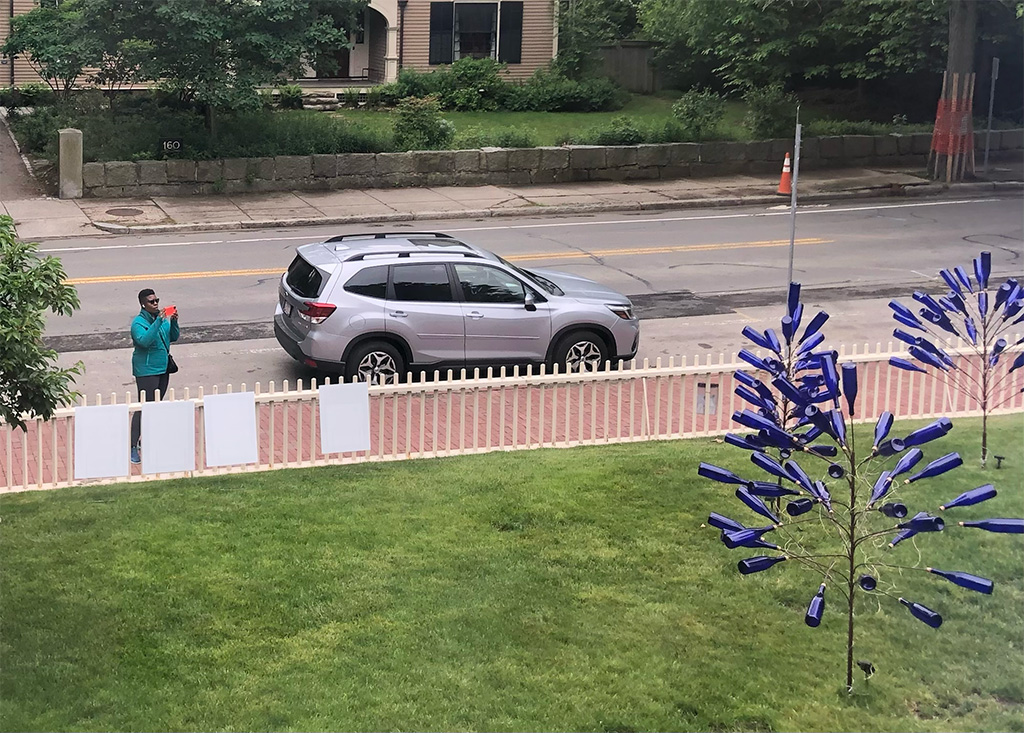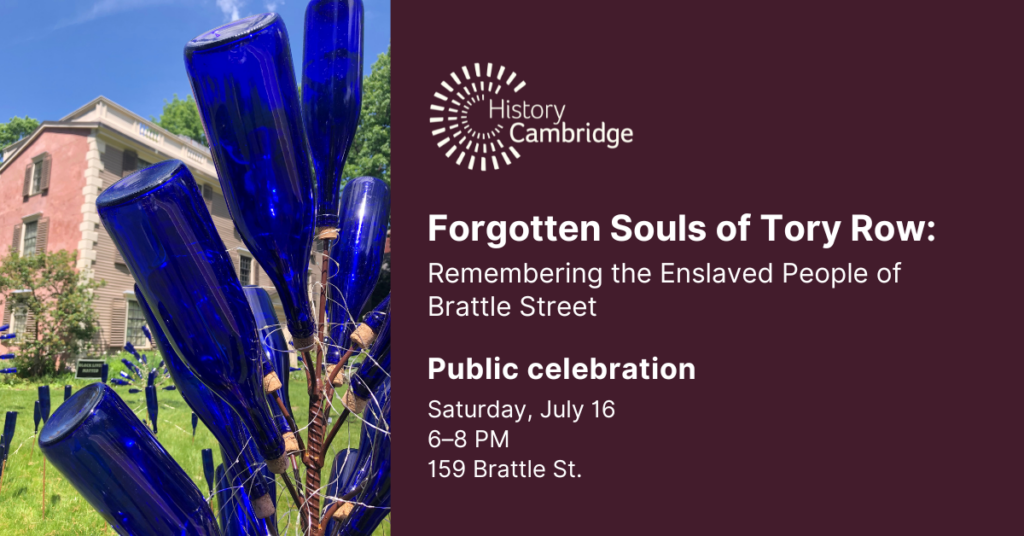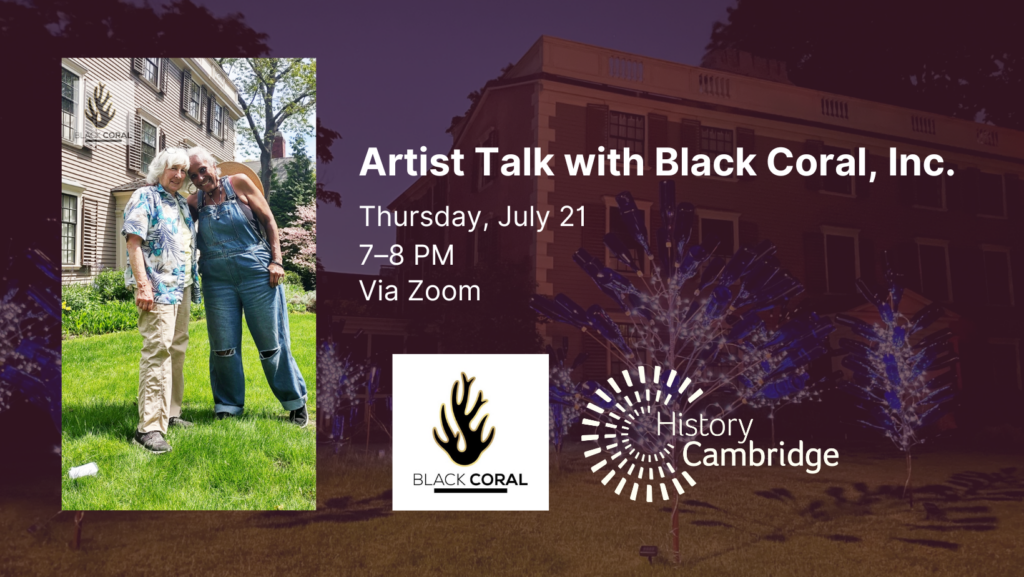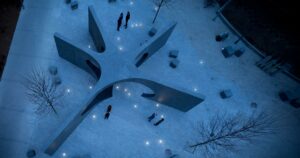
History Cambridge plans a celebration Saturday for its ‘Forgotten Souls of Tory Row’ installation
By Beth Folsom, 2022

History Cambridge put out a call in February to artists to create a temporary installation on the lawn of our headquarters, the Hooper-Lee-Nichols House, 159 Brattle St., West Cambridge. With support from Cambridge Arts and the Mass Cultural Council, this project’s goal was to honor the enslaved people who lived and worked on Brattle Street. Many of the area’s wealthy homeowners made their wealth through enslaved labor in Jamaica and enslaved people at their homes and estates in Cambridge. Joseph and Rebecca Lee, owners of the Hooper-Lee-Nichols House, were complicit in this economy. We know of at least five individuals – Cesar, Prince, Caesar, Mark Lee (or Lewis) and a woman whose name we do not know – who were enslaved by the owners of the house. Although we have no direct surviving evidence that an enslaved person ever lived there, we know other white Tory Row families enslaved people at their Brattle Street mansions. History Cambridge strives to use its headquarters in a way that recovers and shares the stories of the enslaved people of this land and acknowledges that chattel slavery was a Northern as well as a Southern system.
Designed by the artists of Black Coral, “Forgotten Souls of Tory Row: Remembering the Enslaved People of Brattle Street,” honors the enslaved adults and children who lived and worked on this land as well as those whose labor on Caribbean plantations helped finance the grand homes of white Tory Row elites. The installation is a collection of bottle trees. Originating in the Congo in West Africa and dating back more than a millennium, the bottle tree tradition was brought to the United States by enslaved people and passed down through generations. The distinctive blue bottles were placed on tree limbs to capture the energy, spirit and memories of ancestors. Black Coral’s installation is made up of two circles of “trees” made of iron – an exterior circle and a smaller interior circle – with blue bottles on the end of the branches. The trees are strung with solar lights that illuminate at dusk.
Pam Goncalves, one of the artists of Black Coral, describes her vision for the installation: “I hope this is an inspiration for other historical societies and schools to start talking about the work that enslaved people did. I hope it’s a way to bring up the self-esteem and self-confidence in children who don’t hear very much history about who they are and the same thing for adults. Our mission is to give this a positive perspective, for people not to feel ashamed of who they are, to be proud and embrace this. [Enslaved people of African descent] are the inspiration that built the backbone of this country along with the indigenous people.”

Since its installation in June, “Forgotten Souls” has drawn more than 1,000 viewers, History Cambridge estimates. On Saturday, the public is invited to a celebration at 159 Brattle St. The event will feature drumming by Cornell Coley and poetry by L’Merchie Frazier and include a libation ceremony to honor the lives and legacies of those enslaved on Tory Row. The artists of Black Coral will be present to speak about the work. (History Cambridge plans a virtual discussion with the artists for July 21.) Both events are free and open to the public.

Beth Folsom is program manager for History Cambridge.
This article was originally published in our “Did You Know?” column in Cambridge Day.






